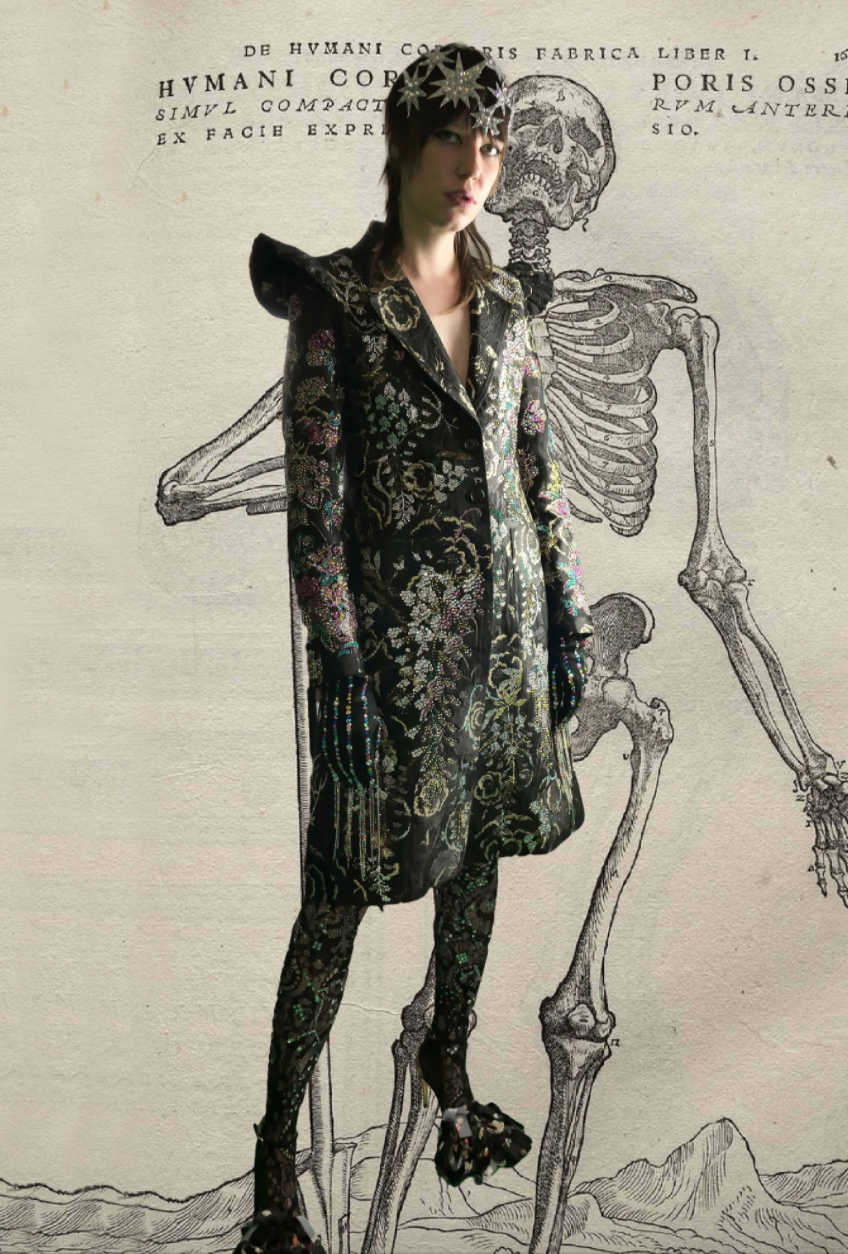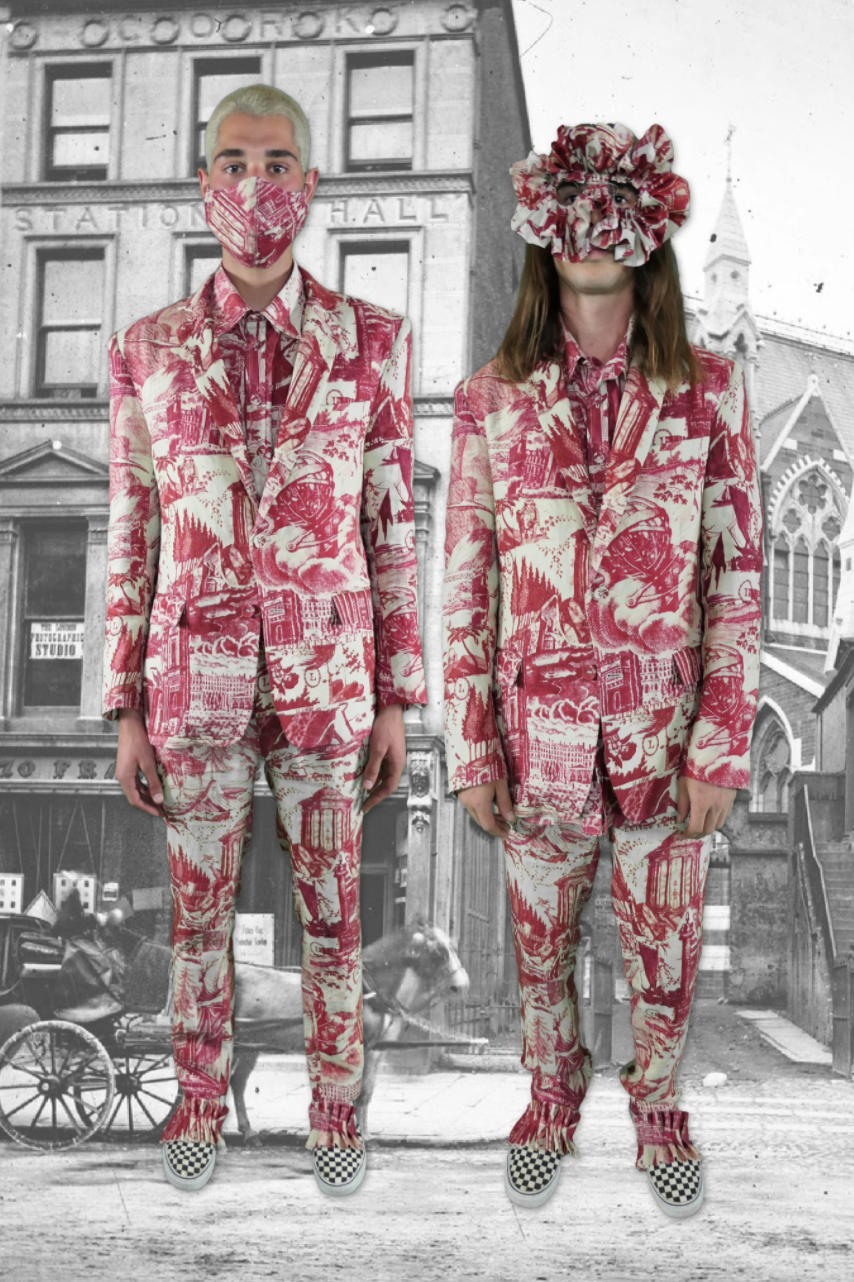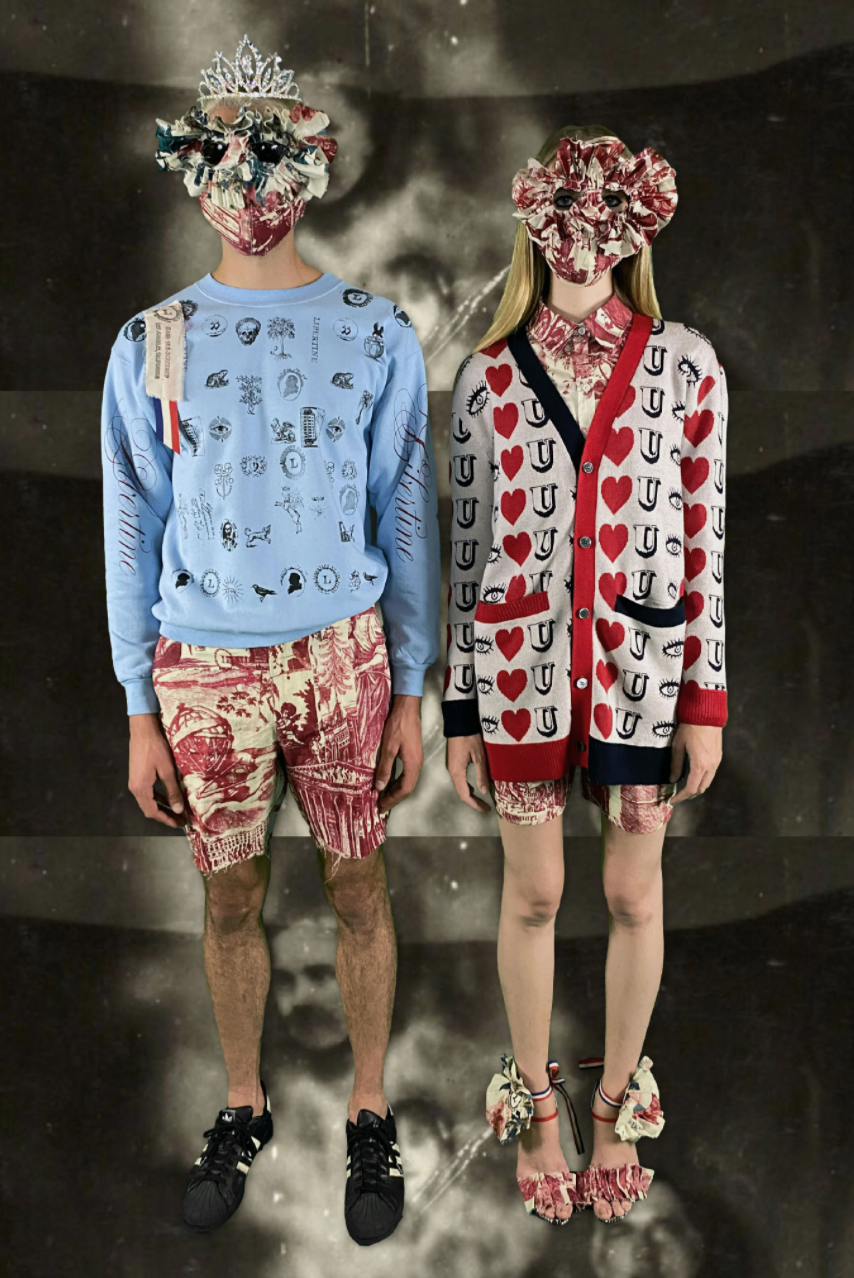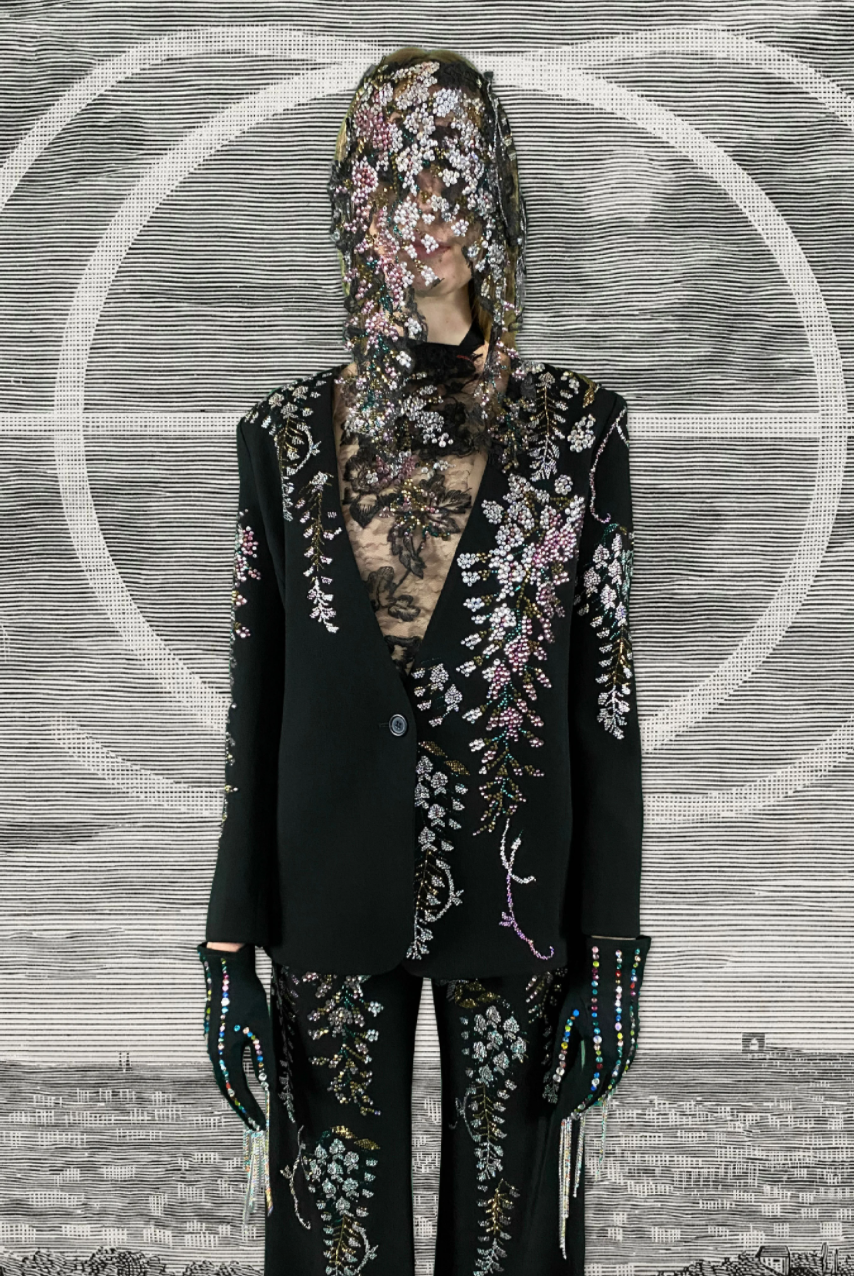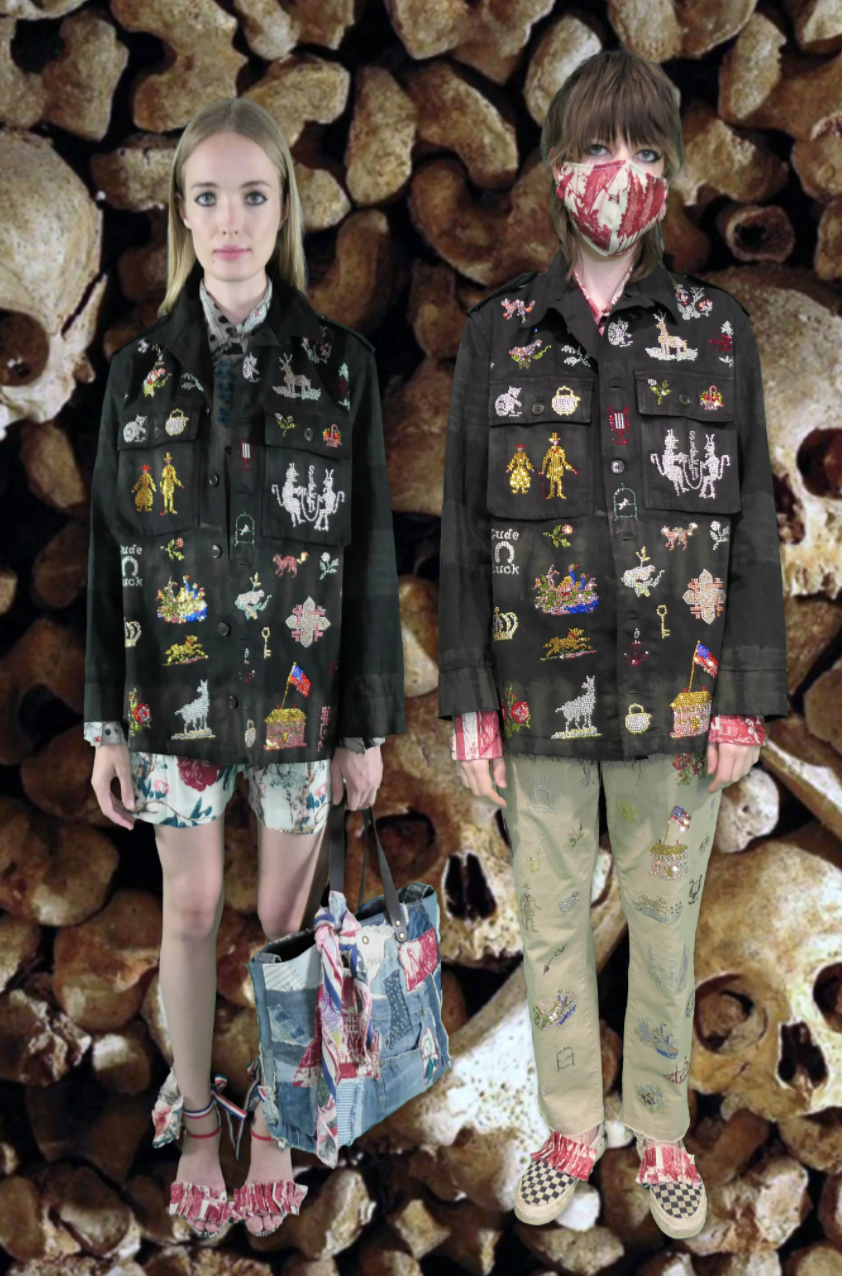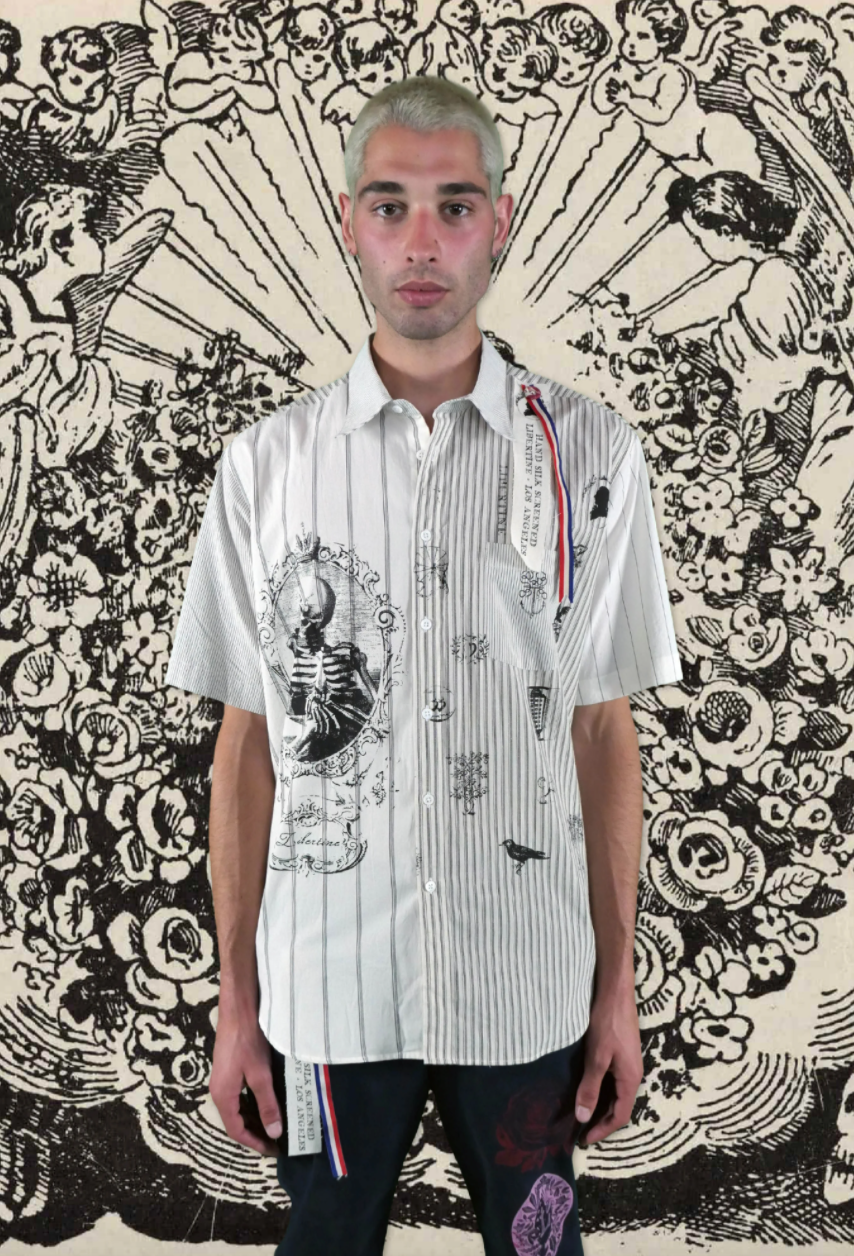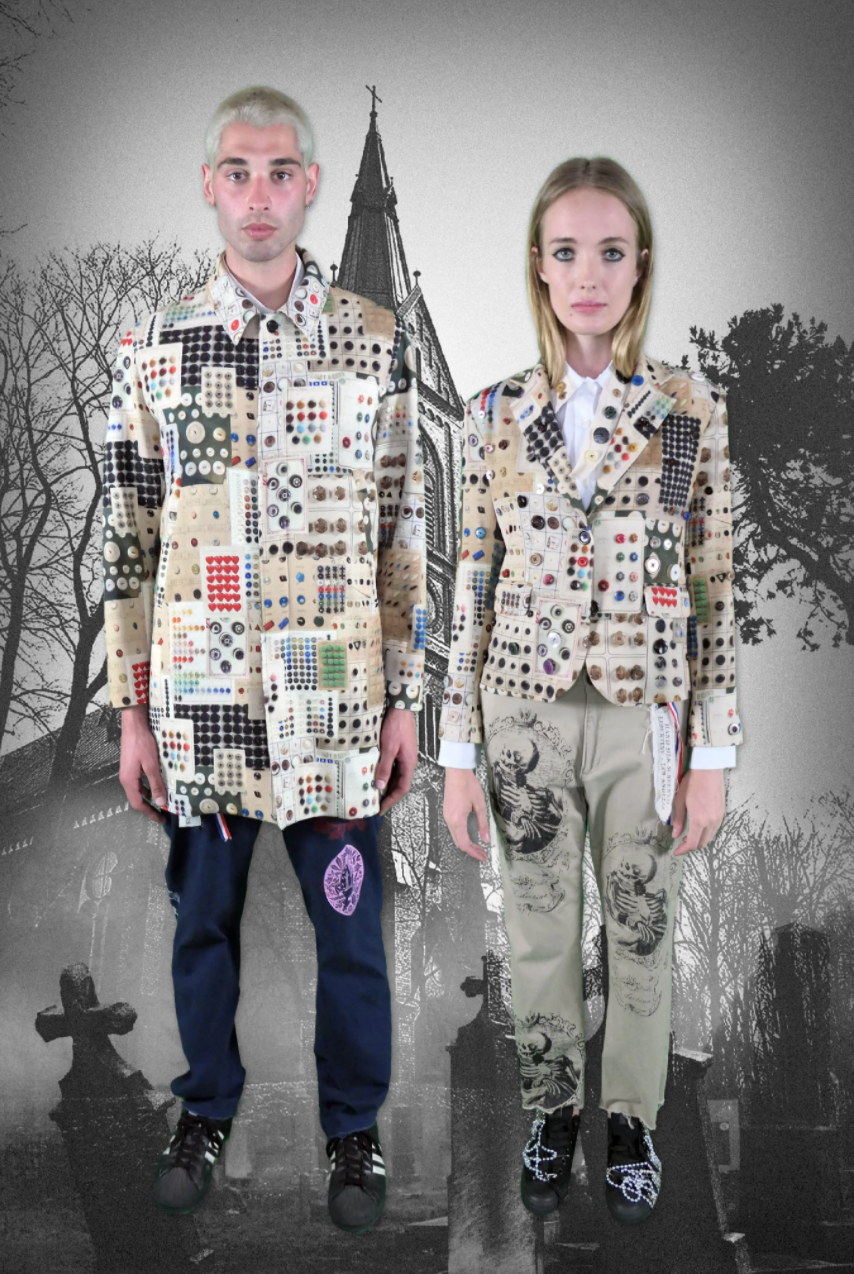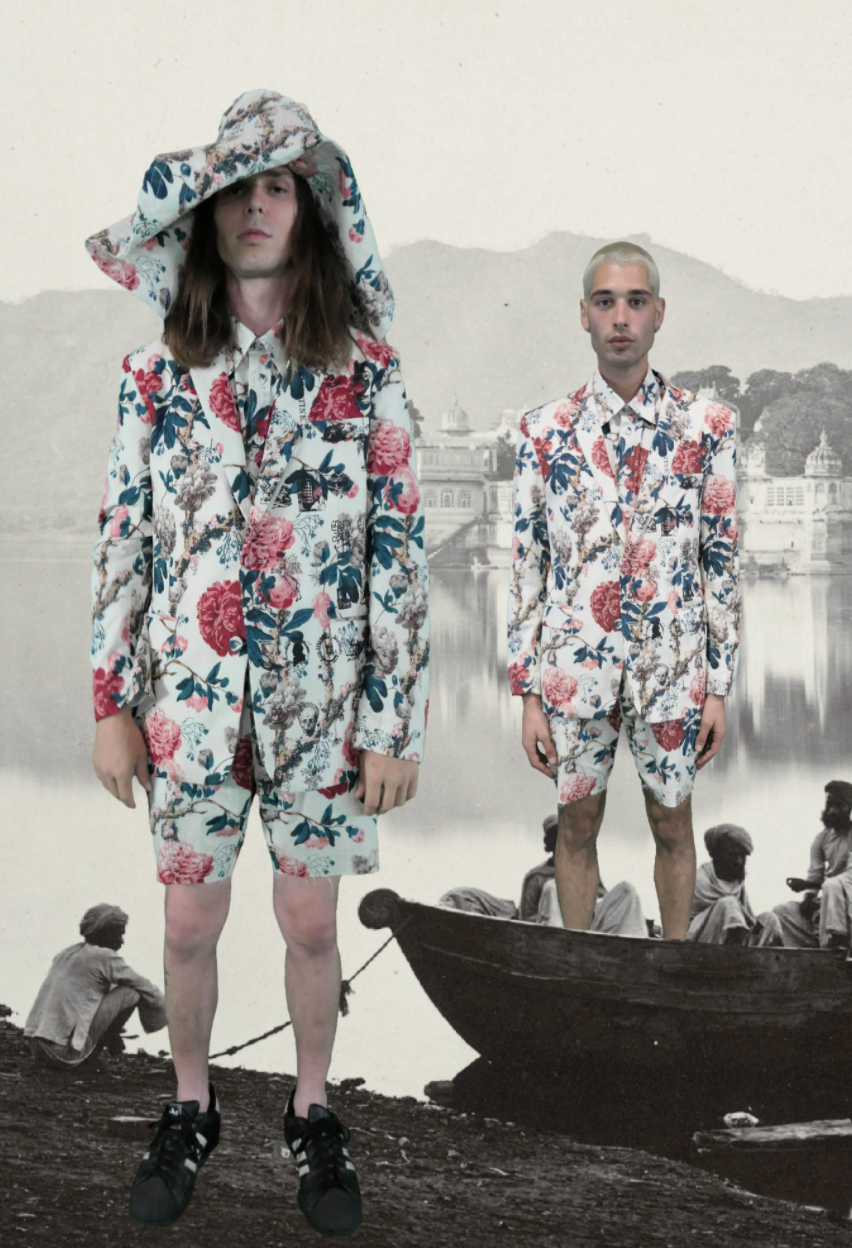Libertine Spring 2021 Ready-To-Wear
/The connections between new and old, past and present, are the main themes of every Libertine collection, but as the brand turns 20, it seems fair to say that “this time, it’s personal”—or more accurately, more personal than ever.
For spring 2021 Johnson Hartig used silkscreens from Libertine’s infant days; he also revisited the whale and skull-and-crossbones pattern developed for the brand’s 2007 collaboration with Target. This time around it was rendered in crystals, rather than embroidery, and used to “glow up” khakis. What was not visible, but important in terms of process and ideology, is that the designer sewed many pieces on his mother’s 1950s Singer, as he did even before the brand assumed its current name.
“I had always made clothes for myself from vintage things that I found at thrift shops [that] I would take apart and put back together,” says Hartig, “and I wanted to learn to silkscreen on clothing.” At a Christmas party he had at home in Los Angeles, he met Cindy Greene, who was working as a graphic designer for DKNY and performing with the electro-pop band Fischerspooner. She saw what Hartig was doing and proposed a collaboration. In 2001 the Californian headed to New York for a weekend to work with Greene in her DKNY studio where he recalls having to hide in the closet every time one of her colleagues entered. And that’s how the yet-to-be-named project set sail. In 2004 the pair made their New York Fashion Week debut with a collection of silkscreened vintage pieces and participated in the CFDA/Vogue Fashion Fund. Greene amicably left the label in 2008.
Over time, the percentage of vintage in the collection shrunk and from scratch grew, but the past is ever a playground for Hartig, an avid collector. For spring 2021 he’s created a Libertine toile print from 18th-century textile fragments, adding surprise elements like a Libertine stamp and skeletons that haunt pastoral landscapes and crumbling edifices. Old stamps are similarly collaged into a print, which in one case was worked up into a lovely bias-cut dress with streamers based on a 1920s frock. Surrealism and trompe l’oeil are also part of the brand DNA. A suit with scissors and pattern-cutting lines is the most direct example. The pieces made up in a print developed from 1920s and 1930s button cards were over embroidered with vintage buttons.
Ghosts From Our Past is the title of the collection, but it is haunted not only by ghosts of the long, distant past. “I also have been thinking about this particular time [and] the nearly 1 million people who’ve died from this virus, about all of these spirits all at once,” the designer states. Hartig’s attention to how we are living now had practical applications: He shifted his attention from dressy evening to more casual everydaywear, like embellished white button-downs and the aforementioned crystallized khakis. Silkscreened cutoff shorts were very now at the same time that they were very “original Libertine,” meaning that they spoke to what Hartig describes as “the tension between preppy and street punk,” which is at the core of the brand.
In place of a show this season, Libertine is presenting a “fantastical” film made by a design associate named Xiaohan Zhao. It’s a trippy tribute to the collection and to the brand ethos. The video, like the collection, is deserving of a best-in-show award ribbon like those that cover a spring 2021 Beale-meets-Bouvier deb dress. In true Libertine fashion, both are “subversive, but also hopeful.”
Source: Vogue
FASHIONADO


